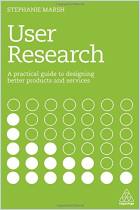Melden Sie sich bei getAbstract an, um die Zusammenfassung zu erhalten.

Melden Sie sich bei getAbstract an, um die Zusammenfassung zu erhalten.
Jennifer Dale and Susan Abbott
Qual-Online: The Essential Guide
What Every Researcher Needs to Know About Conducting and Moderating Interviews via the Web
Paramount Market Publishing, 2014
Was ist drin?
Before you do online qualitative research, consult this expert, accessible guide.
Recommendation
Like the best travel guides, this user-friendly manual offers key information as it entertains. Qualitative-research consultants Jennifer Dale and Susan Abbott provide practical tips, case histories and an illuminating examination of methodologies for managing online qualitative research. They assume you can already handle the related analytical challenges, so they focus on the nuts and bolts of conducting the research. The authors could have paid more attention to potential technological glitches and to how written responses differ from spoken answers. That aside, getAbstract recommends this manual’s guidance to anyone doing online research. If that’s your purpose, this is your book.
Summary
About the Authors
Jennifer Dale and Susan Abbott are members of the Qualitative Research Consultants Association (QRCA). Dale leads InsideHeads LLC, a marketing research firm. Abbot heads Abbott Research + Consulting and co-founded the Think Global Qualitative, an alliance of master qualitative researchers.




















Comment on this summary